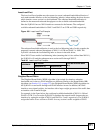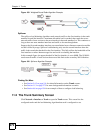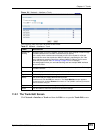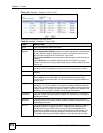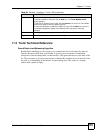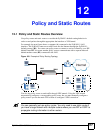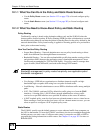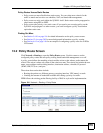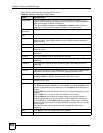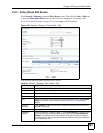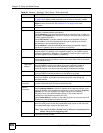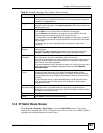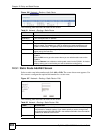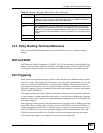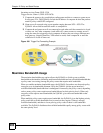
Chapter 12 Policy and Static Routes
ZyWALL USG 100/200 Series User’s Guide
279
Policy Routes Versus Static Routes
• Policy routes are more flexible than static routes. You can select more criteria for the
traffic to match and can also use schedules, NAT, and bandwidth management.
• Policy routes are only used within the ZyWALL itself. Static routes can be propagated to
other routers using RIP or OSPF.
• Policy routes take priority over static routes. If you need to use a routing policy on the
ZyWALL and propagate it to other routers, you could configure a policy route and an
equivalent static route.
Finding Out More
• See Section 5.4.10 on page 116 for related information on the policy route screens.
• See Section 12.4 on page 285 for more background information on policy routing.
• See Section 6.4.3 on page 146 for an example of configuring a policy route for an IPSec
VPN tunnel.
12.2 Policy Route Screen
Click Network > Routing to open the Policy Route screen. Use this screen to see the
configured policy routes and turn policy routing based bandwidth management on or off.
A policy route defines the matching criteria and the action to take when a packet meets the
criteria. The action is taken only when all the criteria are met. The criteria can include the user
name, source address and incoming interface, destination address, schedule, IP protocol
(ICMP, UDP, TCP, etc.) and port.
The actions that can be taken include:
• Routing the packet to a different gateway, outgoing interface, VPN tunnel, or trunk.
• Limiting the amount of bandwidth available and setting a priority for traffic.
IPPR follows the existing packet filtering facility of RAS in style and in implementation.
Figure 194 Network > Routing > Policy Route



